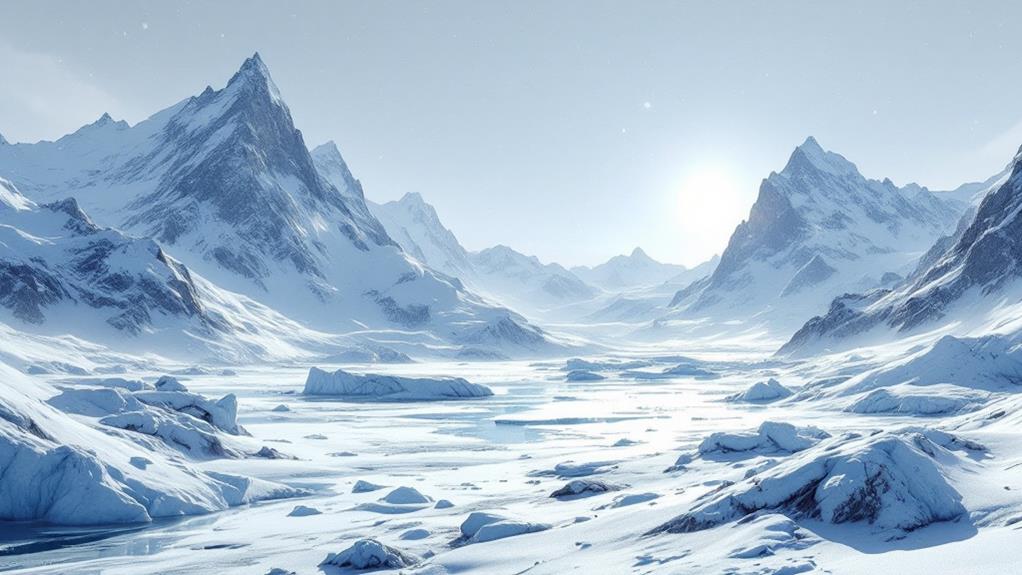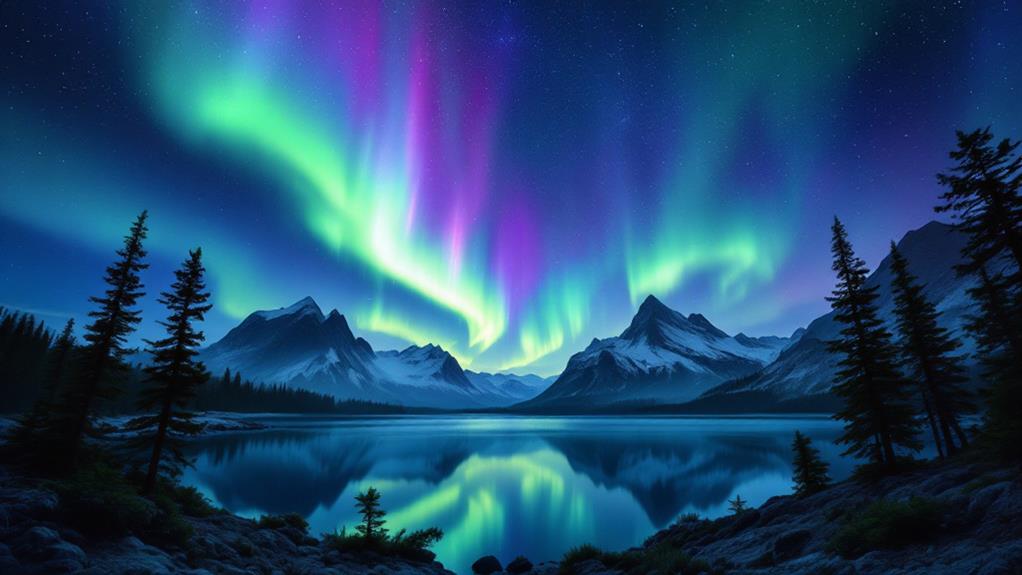The Hottest Places on Earth: Where Temperatures Soar
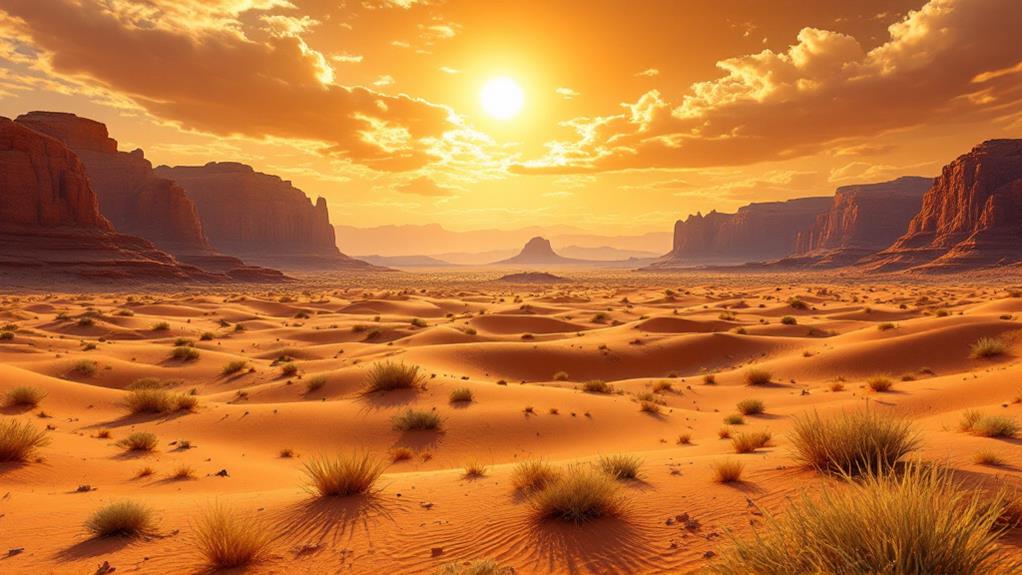
You're in for a sizzling expedition as you uncover Earth's hottest places. Experience Death Valley in the USA, where temperatures can spike above 120°F, and the Lut Desert in Iran, which has reached a scorching 159.3°F. The Sahara Desert in Africa offers vast landscapes and extreme heat topping 122°F. In China's Flaming Mountains and Iran's Dasht-e Kavir, the thermometer regularly hits or exceeds 122°F. Don't forget the Sonoran Desert straddling the USA and Mexico, and the Arabian Desert's immense heat and unique habitats. These places reveal incredible resilience and survival strategies that are nothing short of fascinating.
Death Valley, USA
Situated in the Mojave Desert of California, Death Valley is one of the hottest places on Earth, and it doesn't shy away from proving it. When you visit this arid landscape, prepare for extreme temperatures that can soar above 120 degrees Fahrenheit, especially during the summer months. The area's reputation for intense heat is well earned, with a record temperature of 134 degrees Fahrenheit, the hottest air temperature ever recorded on the planet. You can feel the scorching sun on your skin as you investigate this unique desert environment.
Death Valley's geological features are just as striking as its temperatures. As you wander through the region, you'll encounter a diverse array of landscapes, from the vast salt flats of Badwater Basin, which sits 282 feet below sea level, to the colorful mineral-rich mountains and canyons. The valley's unusual formations, such as the Mesquite Flat Sand Dunes and the enigmatic Racetrack Playa, where rocks mysteriously move across the cracked earth, reveal the power of natural forces at work. Seize the opportunity to witness this challenging yet awe-inspiring environment, where extreme conditions shape breathtaking geological features.
Lut Desert, Iran
While Death Valley's scorching heat might be notorious, the Lut Desert in Iran doesn't lag far behind in the race for the hottest spot on Earth. If you're intrigued by extreme temperatures, you'll find the Lut Desert climate fascinating. In this arid expanse, temperatures have been recorded at an astonishing 159.3 degrees Fahrenheit (70.7 degrees Celsius), making it one of the planet's most intense environments.
When you investigate the Lut Desert, its geology will certainly catch your attention. The landscape is a mesmerizing blend of vast sand dunes, salt flats, and rocky formations. These features contribute to the region's unique climate, as the dark, rocky surfaces absorb more heat, elevating temperatures to their extreme levels. The desert's ground is so hot that it doesn't support much vegetation or wildlife, adding to its stark, otherworldly appearance.
If you ever visit, prepare for a surreal experience in a place where life seems to pause under the relentless sun. The Lut Desert isn't just about its heat; it's a reflection of nature's raw power and resilience. Despite its harshness, the desert's beauty is undeniable, waiting for adventurous souls like you to investigate.
Sahara Desert, Africa
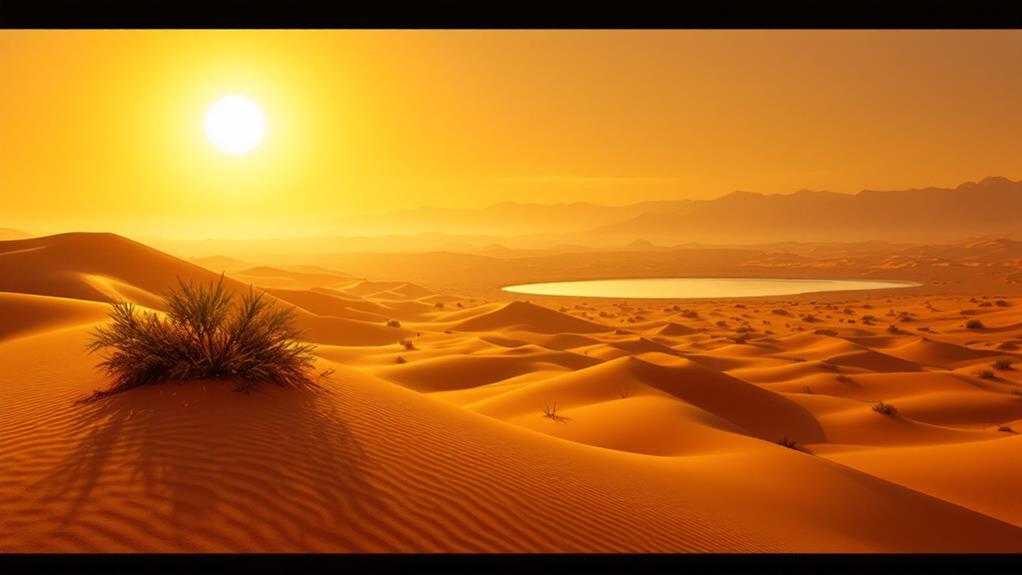
The Sahara Desert often stands as a symbol of the vast and relentless power of nature, drawing adventurers with its awe-inspiring landscapes and intense climate. When you investigate this iconic region, you'll encounter a geography that stretches across 11 countries, making it the largest hot desert in the world. The Sahara's climate is unforgiving, with scorching daytime temperatures that can easily surpass 122°F (50°C).
Despite these harsh conditions, Sahara wildlife has adapted in fascinating ways. You'll spot resilient species like the Fennec fox and addax antelope, thriving in this extreme environment. The desert's rich Sahara history tells stories of ancient trade routes and nomadic tribes, showing how human life has long been intertwined with this formidable landscape.
Sahara culture is lively and diverse, with Berber and Tuareg communities offering a glimpse into a way of life shaped by the desert's demands. Sahara tourism invites you to experience this world firsthand, from camel treks under the starlit sky to investigating ancient ruins. As you embark on your passage through the Sahara, you'll encounter a place where nature's raw beauty and human resilience coexist in harmony.
Flaming Mountains, China
Situated within the arid landscape of China's Xinjiang region, the Flaming Mountains beckon with their striking red sandstone ridges, a natural marvel that seems to glow under the relentless sun. As you stand before these fiery peaks, you might feel the heat rising from the ground, almost as if the earth itself is flame breathing. The temperatures here can soar above 122°F (50°C), making it one of the hottest places on Earth.
The Flaming Mountains' geological significance is as impressive as their heat. These mountains were formed over millions of years through tectonic activity and subsequent erosion, leaving behind the vivid red sandstone that gives them their name. When sunlight strikes the ridges, they appear to blaze, a phenomenon that has sparked local legends and inspired stories like "Journey to the West," where the mountains are said to scorch the heavens.
Visiting these mountains, you'll not only witness a natural wonder but also explore the rich tapestry of history and culture that surrounds them. Despite the searing temperatures, the Flaming Mountains draw you in with their unique beauty and geological intrigue, a reflection of nature's raw power.
Dasht-e Kavir, Iran
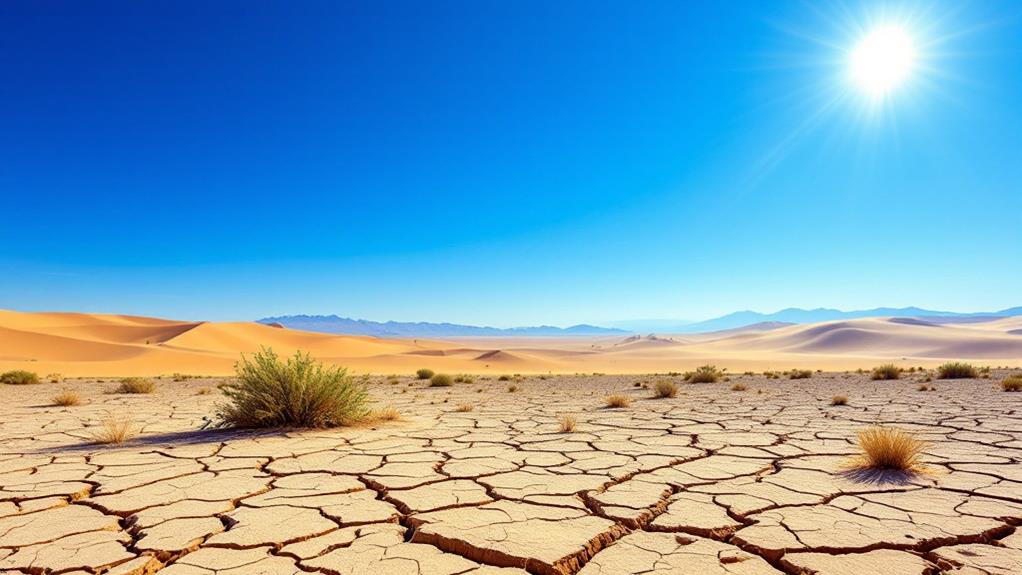
Known as the Great Salt Desert, Dasht-e Kavir in Iran offers a surreal landscape that challenges even the most adventurous explorers. This vast desert stretches over 30,000 square kilometers and is notorious for its harsh climate extremes. During scorching summers, temperatures can soar above 50°C (122°F), creating an environment that's both fascinating and hostile. The intense heat, coupled with the salt-crusted terrain, makes it one of Earth's most unforgiving places.
As you navigate this formidable desert, you'll notice the sparse presence of desert flora. Despite the challenging conditions, certain hardy plant species manage to survive. They've adapted to the extreme climate by developing deep root systems and waxy coatings to conserve water. These plants provide a lifeline for the desert's wildlife, although sightings of animals can be rare due to the harsh conditions.
If you're planning a trip to Dasht-e Kavir, preparation is essential. Carry ample water, wear appropriate clothing, and make certain your vehicle is equipped for the rough terrain. This desert's beauty lies in its starkness, and experiencing it requires respect for its power and unpredictability. Welcome the adventure, but stay safe amidst the climate extremes.
Sonoran Desert, USA/Mexico
Venture from the salt-crusted landscapes of Iran to the lively ecosystems of the Sonoran Desert, spanning parts of the USA and Mexico. Here, you'll uncover a region where the Sonoran climate is both harsh and surprisingly nurturing. The desert's unique geography encompasses vast plains, rugged mountains, and river valleys, creating diverse habitats for a variety of Sonoran wildlife. You'll spot Gila monsters, roadrunners, and the iconic saguaro cactus, each adapted to thrive in this arid environment.
The Sonoran culture, deeply rooted in the desert's resources, is a tapestry of indigenous traditions and modern influences. You'll find that these communities have a profound respect for the land, often expressed through art, cuisine, and architecture. The heat may be relentless, but it's an essential part of life here, shaping daily activities and seasonal celebrations.
You'll also notice ongoing efforts in Sonoran conservation. Preserving this delicate ecosystem is imperative, as urban development and climate change pose significant threats. Investigate protected areas and learn about projects aimed at maintaining the balance between nature and human presence. By understanding and supporting these initiatives, you contribute to the desert's enduring vitality.
Arabian Desert, Middle East
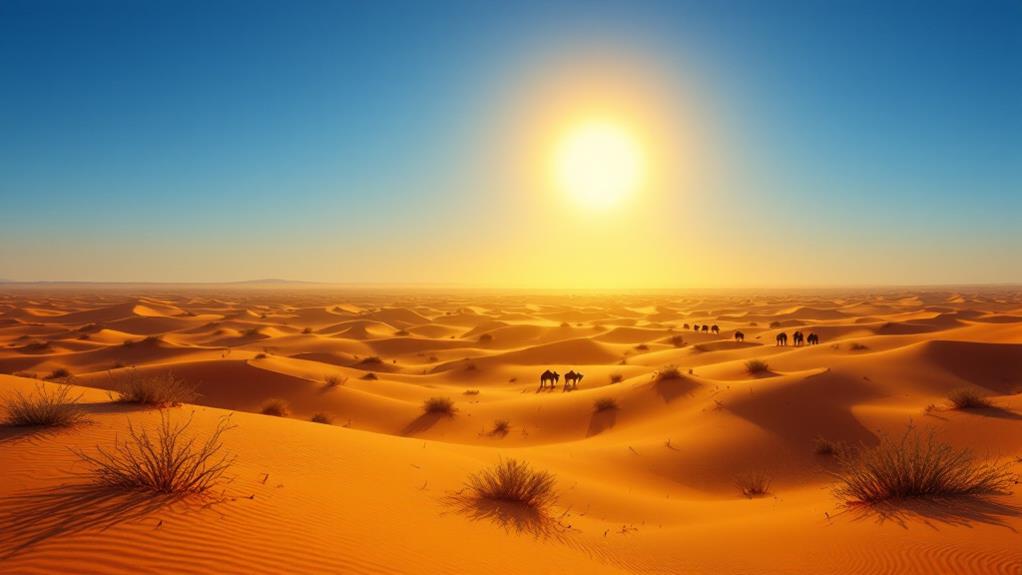
The Arabian Desert stretches across the heart of the Middle East, offering a vast expanse of rolling dunes, rocky plateaus, and arid plains. Here, temperatures can soar above 120°F (49°C), making it one of the hottest places on Earth. As you investigate this harsh environment, you'll uncover the incredible resilience of life through remarkable desert adaptations.
Plants and animals have evolved strategies to survive in these extreme conditions. You've got plants like the date palm thriving around Arabian oases, providing essential shade and nourishment. These oases are scattered throughout the desert, acting as lifelines for both humans and wildlife. They support a unique ecosystem that depends on them for survival.
Animals such as the sand gazelle and the Arabian oryx have adapted to conserve water, often getting moisture from their food. When you observe these creatures, you'll notice their ability to endure the desert's relentless heat and scarcity. Humans, too, have adapted, using traditional knowledge to thrive in this arid landscape. From wearing loose, light clothing to constructing homes from insulating materials, the people here display resilience and ingenuity in their quest to overcome the desert's challenges.
